 |
High Pressure
I. Types of Pressure Cells |
 |
High Pressure
I. Types of Pressure Cells |
Types of Pressure Cells
Small or big; which is beautiful?
Traditional high pressure research involved relatively large specimens contained between a piston and cylinder or the anvils of a multi-anvil press (e.g. 4 anvils, 6 anvils). This was ideal for generating the pressures required in the era of science that was chasing synthetic diamonds and investigating properties at pressures of say up to 100 kbars. These pressures were achieved using large presses weighing and delivering many tonnes of force onto volumes, typically ≈mm3. These volumes would be considered to be too large by the current ultra-high pressure community; however such bulky equipment and large specimen volumes still have a niche in the study of materials synthesis or where complex measurements need to be taken during pressurisation.
Parallel to large press systems are the small diamond anvil cell devices, known as DAC for short. Since pressure is defined as force/area, one can obtain high pressures rather by reducing the area of contact than by increasing the applied force. This is a basic principle of the operation of the diamond anvil cell in which quite modest forces are applied, usually via a screw plus cantilever system, to two opposing anvils; rather it is the performance of the diamond anvils that dictates the pressure achieved. The diamond anvil cell was invented at the University of Chicago, following previous versions in which one of the diamond anvils had a small cylindrical hole drilled inside. The original prototype, by Jamieson and Larson (in 1958) was used to discover a new form of bismuth at 35 kbar, the X-ray beam being directed across (from the side) the cell. Two significant later modifications to this design were:
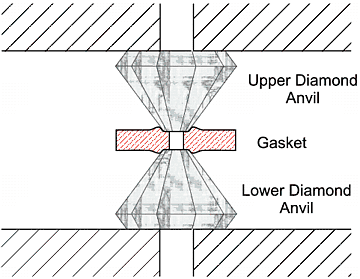
Some typical views of the cell during operation of a DAC are illustrated in the following collage:
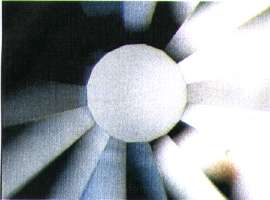 |
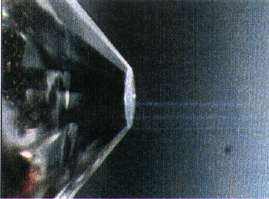 |
| Looking down on the flat 400 µm culet of the diamond... | ...and from the side. |
 |
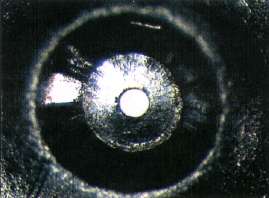 |
| Indent of diamond in tungsten gasket. | After sample hole is drilled. |
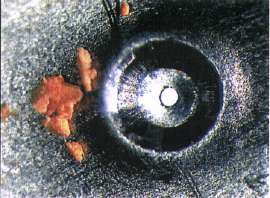 |
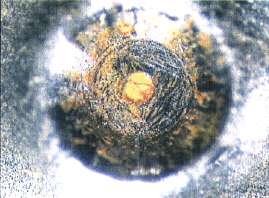 |
| Indent, hole and sample (CdSe). | Sample loaded. |
 |
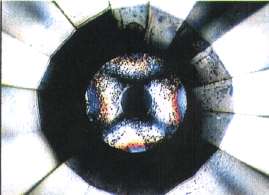 |
| Ruby chip on diamond (circled in blue) to measure pressure. | Sample under pressure. Stress pattern in diamond gives colours. |
|
© Copyright 1997-2006.
Birkbeck College, University of London.
|
Author(s):
Paul Barnes Simon Jacques Malcom McMahon Martin Vickers |